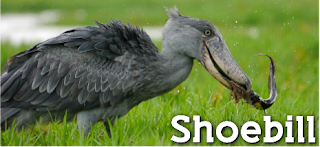In the wild, a mere 10 kilometer stretch harbouring the essentials of water, food and shelter can seem like Heaven for wildlife.
Thus it was with Lugogo Swamp in Ziwa Rhino Sanctuary. At 6 am, the Canoe ride on the swamp waters started; more, the cold of the outdoor camp got me up before 6, with ample time for the morning rituals.
Lugogo Swamp, a 10 kilometer wide wetland at the border of Ziwa Rhino sanctuary, catered to a battalion of animals; with over 300 bird species calling it safe haven.
Embracing that early morning cold paid off with the heavenly vista of the Sun rise. I had opted in for the early morning canoe ride specifically for that reason and was amazed by the panorama.
The Swamp was then churning out fog at masses a minute. An hour after setting sail, the voyagers and I, under the leadership of an experienced guide, navigated through shrubs and interposing thickets to locate the shoebill nests.
These, among other birds, called Lugogo wetland home. I, too, had earlier been enticed into the opportunity to sight these rare birds.
And within two hours it was clear that once the rare shoebill storks came into view, they were spectacular.
These very large stork-like birds, deriving their name from their enormous, bulbous, straw coloured bills, were tall with wingspans of approximately 7 - 8ft.
They had dark coloured, fairly long legs, exceptional large feet that aided hunting in this aquatic vegetation.
Other easily spotted birds included:
The small chinspot batis: A rather Stout bird, with a black mask on its face, short white eye stripes and a grey cap.
The yellow eyes and, black legs and bill made this songbird extremely cute!
The Booted Eagle: A medium-sized bird of prey. Eagle like in shape with a wingspan of approximately 130 cm; having a mid-brown plumage and grey flight feathers.
Nesting up in the trees, in nests made of sticks and leaves.
The African Marsh Harrier: yellow eyed, adorned with a brown plumage, pale streaking on the head, breast and rufous on the thighs and belly.
This bird of prey was patched up in the trees with a stare that one could only deduce as a hunting stare.
And last but no least,
The Abdim's Stork: This black stork had red knees and feet, grey legs and bill and white underparts.
Its red facial skin in front of the eyes was striking. It was pecking at what I hoped to be caterpillars inside the bark of a tree; had a kind of sense for danger, like all birds do, for it kept on taking note of our every position.
Lots of bird species could be sighted, and before anyone of us had reached his or her fill of bird watching, the tour guide had realized that the allocated time was done and added a few extra.
The cool swamp waters were generally calm and the surrounding informatively enriching.
Being only 10 kilometer, this patch of Ziwa Rhino sanctuary was packed with wonder. For those 4 splendid hours, I had managed to do away with much of technology and returned to primal man.
Just a pair of binoculars, life vest, a book and pen; the wild and I.
Image Source: Pinterest











No comments:
Post a Comment